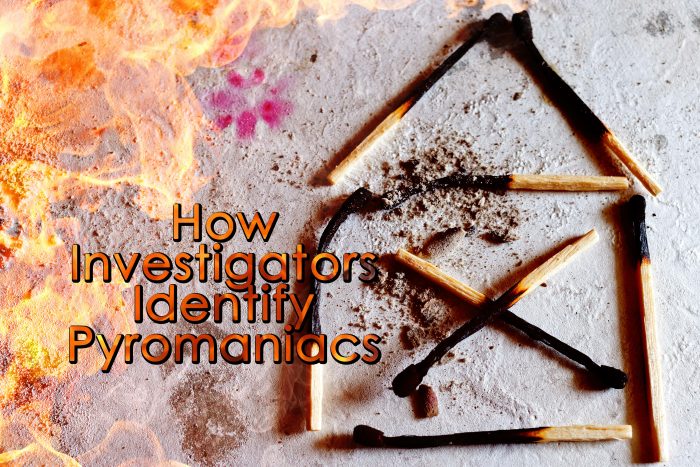How Investigators Identify Pyromaniacs

How Investigators Identify Pyromaniacs
A fire is an intense force of Mother Nature that destroys everything in its path. It’s hot, and its color is a deep, angry orange that warns us to stay away. It’s also fascinating, looking into the fire as the flames dance and sparks fly. Some people may be just a little too fascinated with fire . . . To some people, the thrill of starting a fire drives them to do evil things. These people are called arsonists.
Though we can’t be positive about what goes on in the mind of an arsonist, psychologists have attempted studies to help get a better profile for arsonists. Psychology.com mentions that early fire-setting by children may lead to schizophrenia in adult years. Research suggests that arsonists could possibly be mentally ill. Pyromania is a disorder affecting impulse control that gives individuals the desire to light fires, which could also have something to do with why arsonists want to light fires. Arsonists could also want revenge on a situation, and their intentions are to harm others.
Regardless of why individuals choose to start fires, it happens. If there’s a possibility that a fire could have been intentionally set, there will be an inspection of the property to determine the cause of the fire.
Unfortunately, fires burn everything in their path–destroying some evidence that could assist with the investigation. When a fire is put out by emergency services, a foamy water mixture is poured onto the fire, which could also damage evidence. However, the fire department typically arrives before the fire has totally destroyed everything, giving fire investigators a chance to determine the cause of the fire.
Arson investigators must interview any witnesses to pick up on any details that could help solve the crime.
The first step is to find the origin of the fire. Often, firefighters will look for what’s called the “char pattern”, which is sharp, black lines that reveal what was burned. Following the char pattern can backtrack to where the fire originally started. Once the origin of the fire is detected, investigators search for any evidence that could have started the fire, like a match or a cigarette butt, possibly. Electrical problems are identified by looking at the outlet or the fuse box and studying the char patterns and whether the plastic melted.
If there is suspicion that the cause of the fire was arson, investigators will completely strip the floor to try to pick up any clues–stripping the floor could reveal any gasoline pours on the floor.
These cases are thoroughly investigated because of the frequency of arsonist fires.
Do you have questions about your insurance? Find an insurance agent near you with our Agent Finder
Search All Blogs
Search All Blogs
Read More Insurance Blogs
Your Life Insurance Recipe: Crafting the Perfect Blend for Your Family’s Future
Find your perfect life insurance mix: Learn how to blend term and permanent policies for optimal family protection.
Embracing Tomorrow: The Practical Power of Planning for Life’s Only Certainty
Face the future with confidence: Understand how planning for life’s only certainty with life insurance can provide lasting security.
Navigating the Grandparenting Journey: Understanding Today’s Families
Grandparenting today: Learn key shifts in family dynamics to build stronger connections with your children and grandchildren.
Finding Your Financial Foundation: Understanding the Minimum Life Insurance You Need
What’s the minimum life insurance you really need? Learn about covering final expenses, debts, and providing immediate financial relief for your family.
Declutter Your Life: Beyond the Physical to a More Streamlined Existence
Tired of clutter? Discover actionable tips to declutter not just your belongings, but also your finances and digital life for a more streamlined and stress-free life.
Your Life Insurance Journey: Start Small, Dream Big, Build Security
Don’t wait for the perfect policy. Discover how starting small with life insurance is the key to building long-term financial security for your family.
Small Steps, Big Impact: Achieving a Healthier Lifestyle Without Radical Overhaul
Forget extreme diets and intense workouts. Learn how simple, everyday choices can add up to a healthier lifestyle.
Weaving Family History: The Power and Importance of a Family Timeline
More than just dates: Crafting a family timeline to connect generations and preserve memories.
Family Fitness Adventures for Lasting Memories
Ditch the couch: Active family fun for a healthier, happier life.
Beyond Upfront Payments: Pre-Planning Your Final Arrangements with Peace of Mind
Pre-planning your farewell: Affordable options and peace of mind.










